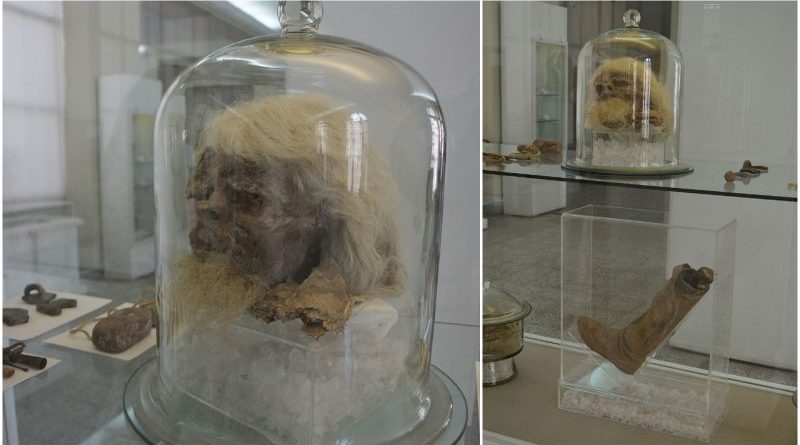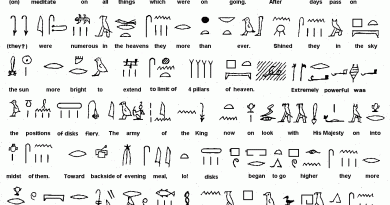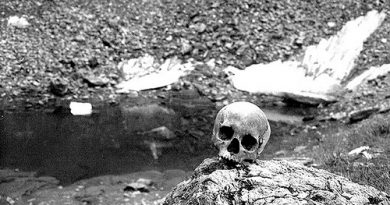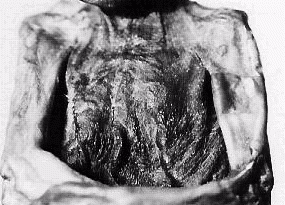Unexplained Mysteries of The Iranian Saltmen
The Saltmen were discovered in the Chehrabad salt mines, located on the southern part of the Hamzehlu village, on the west side of the city of Zanjan, in the Zanjan Province in Iran. By 2010, the remains of six men had been discovered, most of them accidentally killed by the collapse of galleries in which they were working. The head and left foot of Salt Man 1 are on display at the National Museum of Iran in Tehran.
The salt mines of Chehrabad, Iran, provided this essential mineral for more than 2 millennia to anyone who inhabited the vast realm of the former Persian Empire.
When attempts were made in recent years to re-establish the production of salt, for it still represents a basic ingredient in our daily diet, it led in some surprising directions. In 1994, the digging accidentally revealed a mind-blowing discovery. The commercial operation that had been launched literally bumped into an incredibly preserved corpse dating from the period around 1700 B.C.
Needless to say, the excavation prompted Iranian archaeologists to flock to Chehrabad, located some 210 miles northwest of the country’s capital, Tehran. The tiny village in the province of Zanjan, with a population of 378, soon became a place of great interest. More bodies were found in the following archaeological excavations conducted in 2004, 2005, and 2007, which provided a unique insight into the history of the region and the technology that was developed for such complex mining practices.
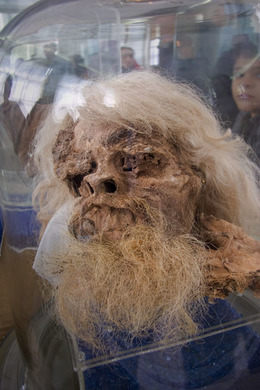
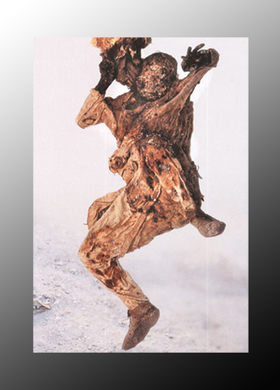
In the winter of 1993, miners came across a body with long hair, a beard and some artifacts. These included the remains of a body, a lower leg inside a leather boot, three iron knives, a woollen half trouser, a silver needle, a sling, parts of a leather rope, a grindstone, a walnut, some pottery shards, some patterned textile fragments, and a few broken bones. The body had been buried in the middle of a tunnel approximately 45 metres in length.
In 2004, another salt miner found the remains of a second man. During archaeological excavations in 2005, the remains of another two well-preserved men were found. In 2006, the Iranian Cultural Heritage News Agency partnered with German Mining Museum in Bochum (Germany), in 2007 with University of Oxford and the Swiss University of Zurich for thorough investigations. A scientific long-term project was started, supported by Deutsche Forschungsgemeinschaft (DFG) and British funds. Four corpses, including a teenager and a woman, are kept at the Archeology Museum (Zolfaghari House) in Zanjan. A sixth corpse found in the excavation campaign 2010 was left in place at the salt mine. Three hundred pieces of fabric were found, some of which retained designs and dyes. In 2008, the Ministry of Industries and Mines canceled the mining permit.
The reason for the state of the long dead human remains, the fact that their flesh failed to dissolve despite being buried for more than 1,500 years, is the salt, which served as a natural preservative. The remains of six people found on the site were soon dubbed the Saltmen due to this situation.
The first estimate of how many people had been auto-mummified soon rose to eight, after it was determined that some parts belonged to corpses that were yet to be discovered. Just for clarification, the process of auto-mummification is opposite of that of medicinal, intentional mummification.
Such examples include corpses that were preserved by ice, or a special kind of auto-mummification known as Soapman, meaning that human body fat causes a reaction with the clay ground, creating a soap-like protection which mummifies and preserves the flesh.Together with the preserved flesh and bones in the Chehrabad site, there were pieces of fabric that proved to be extremely useful when it came to different types of analysis, especially for establishing the precise age from which it came.
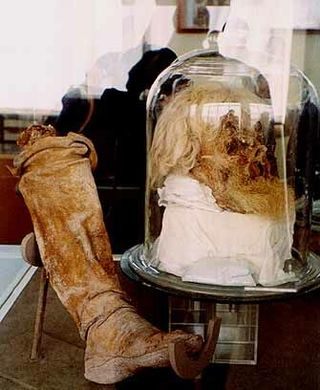
In the process of determining which period the mummies dated from, crucial help came from Oxford University, which was happy to participate in such a historic find.
Perhaps the most interesting find is the first one, in which a head with gray hair was discovered by accident, together with his left leg, with a shoe still on. A man in his late thirties, or early forties, was found with his face bashed by a hard object, which was most probably the cause of his death. In fact, it was determined that this was not a burial ground but a real working mine which most probably collapsed numerous times, killing many.
Together with the body, valuable artifacts such as iron knives and a gold earring were found. This confirmed the theory that the first Saltman was a person of great importance and not just a simple salt miner. The head has been transferred to the National Museum of Iran located in Tehran, while five more remains are exhibited in the Zanjan Archaeology Museum.Soon it was determined that this man most probably met his demise during the Sasanian Empire. The Sasanids, also known as the Neo-Persians, were the heirs of the ancient Persian Empire, ruling the historically Persian territories from 651 A.D. to 224 A.D.
Apart from focusing on the human remains, the researchers had material to assemble enough data on the history of the ground itself, which appeared to be a source of salt for several developed civilizations throughout different periods, ranging from the early Persian realm called the Achaemenid Empire, together with Parthian and the before-mentioned Sassanid.
Source : VintageNews
